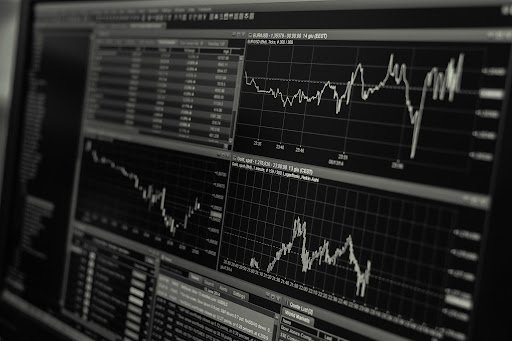Generally, investments are associated with numerous risks. For example, in trading, the risk is the investment’s potential failure to deliver the expected return. This implies getting lower profits or losing the original investment.
Traders often find it hard to determine their appropriate level of risk to take, especially the inexperienced ones. However, with considerable experience, they can learn how to balance and tolerate these risks.
This article will discuss crucial information that will assist traders in understanding risk-management in trading. We will include the following information:
- What is trade risk-management?
- Importance of risk-management
- How to develop a risk-management strategy
- Risk-management strategies

What Is Trade Risk-Management?
Trading usually involves certain risks. They include:
- Gap risk; Arise in case of a trading-break
- Slippage risk; These are the hidden costs in transactions
- Poor execution risk; Usually involve the problems encountered by the trader when setting up the investment
Trade risk-management refers to the processes applied in the trade activities to control the losses and develop a good ratio between the risks and the rewards. These processes involve identifying, assessing, and managing the risks that threaten the trader’s capital and earnings.
The risks usually arise from natural calamities, legal liabilities, strategic management errors, accidents, and financial uncertainty. Since investments face unexpected risks, traders are obligated to prepare for these risks and come up with means of minimizing them before they happen.
Importance Of Risk-Management
Usually, it is pretty hard for traders to predict the future of their investments. However, with a risk management approach, they can easily plan for the unseen risks and establish strategies for dealing with them on occurrence. This saves on the resources while ultimately safeguarding the future of the investment.
Understanding and controlling the risks enables the traders to have more confidence in making future decisions for the investment. In addition, it significantly assists the traders in achieving their investment goals.
By including risk-management in their investments, traders also create a safe and secure environment for their customers and staff. Since it is easier to make better decisions, the staff do not have to fear for the future of their careers. Similarly, the customers are guaranteed long-term and good services.
One of the unexpected sources of risk in investments includes legal liabilities. Fortunately, risk-management assists in mitigating this risk to increase the stability of the business operations. In addition, risk-management helps the traders establish the insurance needs for the investment, thus saving on unnecessary premiums.
How To Develop A Risk-Management Strategy
Developing the appropriate risk-management strategies will significantly assist in managing the unmanageable. However, there is no single solution for developing an effective plan. The planned development involves several steps that include:
- Risk identification
- Analyzing the risk
- Ranking the risk
- Addressing the risk
- Responding to the risk
- Monitoring the risk

Identifying The Risk
It is pretty challenging to address the risks when you are unaware that you are facing them. Risk identification may start with scheduling a brainstorming session with your staff. Looking at the past and current risks in the particular investment makes it quite easier to predict the future ones.
Analyzing The Risk
After identifying the potential risks, the next effective step is conducting a deep analysis of the particular risk. You will need to identify the source of the risk and how it will affect your business in the future in terms of operations and finance. This way, it will be much easier to come up with effective methods of mitigating it.
Ranking The Risk
Risks are generally created unequally. Some are much detrimental, while others have an almost negligible impact on investments. On the other hand, numerous risks might be overwhelming; thus, you need to prioritize them to address the pressing ones first.
Addressing The Risk
After ranking the risks, you need to assign them to the appropriate staff in your organization to effectively manage and oversee. Ensure you assign the risk to the appropriate person who is good in the particular risk area. In addition, you can go an extra step further and create a risk-management team for your investment.
Responding To The Risk
Responding to the potential risks efficiently is a contingency of developing an effective risk-management strategy. After identifying the risks, you ought to develop plans that will significantly assist you in mitigating them.
Create a risk mitigation plan for each risk you have identified. These plans should include preventive and contingency strategies. Your risk-management team will assist you in addressing the various identified potential risks.
Monitoring the risk
Generally, the activities of your investment will change over time. Therefore, these activities include risks. As these changes occur, you will need to update your strategies so that you do not become complacent with the potential risks in the investment.
Thus, you should incorporate random continuous reviews on your risk-management plans so that you keep the investment updated on the potential risks. This way, you will have a more agile and prepared investment that is sustainable and open to innovations.
Risk-Management Strategies
Plan Your Trades
Before setting up the investment, you must have a glimpse of the capital amount you plan to allocate to the investment operations. Planning is what helps the business to succeed. Even though situations change over time, you need to have a clear starting.
The next crucial step to take after allocating capital to the business is ensuring that your broker rewards frequent-trading. Normally, most brokers will charge high commissions to infrequent traders. Besides, it might not provide active traders with the appropriate analytical tools.
Traders can plan by using the stop-loss and take-profit points. Usually, successful traders know how much to pay and how much to sell. After measuring the returns and determining that they are perfect for the trade, then they carry on.
Unsuccessful traders will typically trade without understanding the profits and the losses. Normally, they execute their trades based on luck, just like in gambling. As a result, they mostly end up with detrimental losses that provoke them to hold on.
Consider The One-Percent Rule
Most traders apply the one-percent rule in their trades. The rule suggests that you should always allocating at most one percent of your capital in a single trade. However, this rule applies to the equity but not to the borrowed funds. For instance, if your trading-account balance is $100,000, you should only trade $1,000.
If you are certain of affording the trade and making a profit, you can even go as far as 2%. Going beyond this can be very detrimental if you are quite unfortunate to make constant losses. However, the results of the one-percent rule largely depend on the market liquidity.

Set-Up Losses And Take-Profit Points
Stop-loss refers to the price that the trader sells a stock while taking a loss. This usually happens when the trade goes against the trader’s expectations. These points are created so that they prevent the trader from having the mentality that a losing trade will come back. Thus, they limit the losses before they accumulate. Usually, professional traders will sell a stock as soon as it goes below the key support level.
An example of a stop-loss is when you buy a particular stock at $100 per share. If you fear that the results might be a loss, you can apply for a stop order and sell the stock if its price goes beyond $90. This protects you from having a huge loss.
On the other hand, the take-profit point refers to the price that a trader sells a stock while making a profit. Sometimes, a particular trade will largely move upward and then suddenly start approaching the key resistance level. In this case, the professional traders will sell the stock before the consolidation period.
Diversify And Hedge
Successful traders do not usually put their investments on a single stock. Doing so is preparing for a huge loss. Instead, always ensure that you diversify your investments across the industrial sector and market capitalization. This is significant in managing the risks while opening up the doors to more opportunities.
Sometimes, you might also want to hedge your position. The hedge is mostly applied when you intend to reduce the risk of adverse movements in stock prices. Hedging usually involves taking the opposite direction against an investment when its results are due. This protects your position in the trade since you can unwind the hedge when the trade subsidies.
Hedging is mostly done by using derivatives. However, swaps, insurance, futures contracts, among other financial instruments, can be used.
Know Your Bottom Line
Your bottom line is your net income or profits. The term bottom line is used to refer to the activities that increase or decrease your profits. If your earnings are improving, then you have an improving bottom line.
Professional traders are always in a constant desire to improve their profits by increasing their revenues and improving efficiency. You can calculate your bottom line by subtracting your expenses from the gross sales that include the total sales in a particular trade period.
The bottom line is crucial as it assists you in determining if your investments are profitable. Some of the activities that improve the bottom line concentrate on marketing for more sales generation and reducing investment expenses.
Set Orders And Reward: Risk Ratio
This ratio is what determines your potential losses and profits in any trade. Risk is usually the distance between your entry price and the stop-loss price. Reward refers to the distance between your entry price and the take profit.
Calculating the ratio requires you to have the following components:
- Entry price
- Stop loss
- Take profit
Risk reward ratio= total risk/total reward
Total risk= pip value ×(entry price- stop-loss price)
Total reward= pip value ×(entry price- take profit)

Technical Analysis
Traders usually apply technical analysis to determine when to enter and exit a particular trade. The strategy uses support and resistance levels. You can find the support and resistance levels by using the trend lines.
Conclusion
You have to develop an effective risk management plan to be successful in your trades. In addition, you will require more than one strategy to significantly evade the losses. While using the one-percent rule will assist you in avoiding large losses, on the other hand, technical analysis is equally important as it helps you to determine your ideal trade entry and exit levels.
In addition, you should consider calculating your potential risk to reward ratio before indulging yourself in a particular trade. This way, it will be easier for you to determine your financial goals about your potential risks. Most importantly, you have to understand that it is rare to win in all trades. However, you have to formulate a plan that will provide you more profits than losses.
